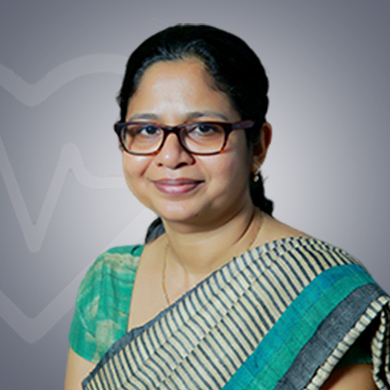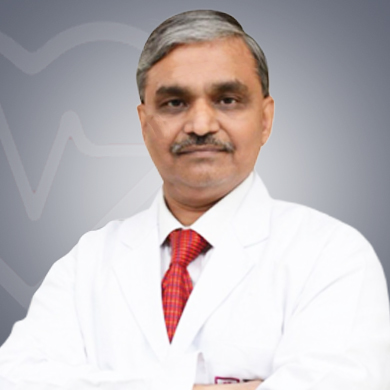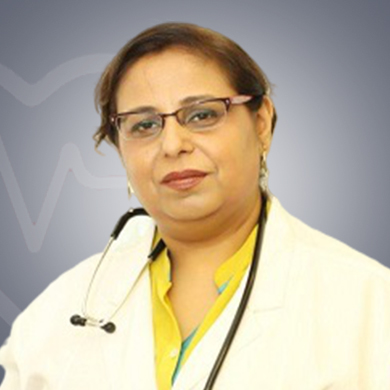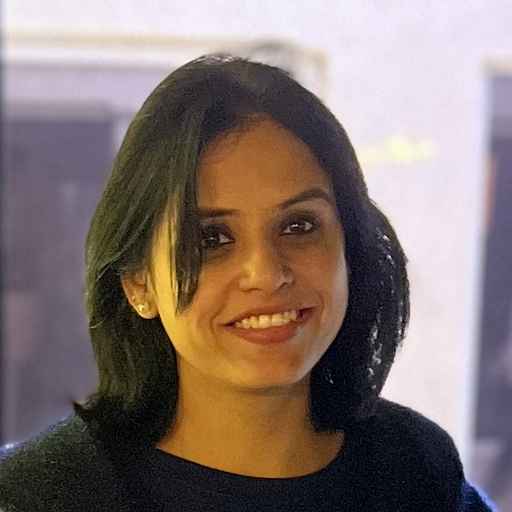The curability of Stomach cancer is around 75%. Stomach cancer, also called gastric cancer, is an uncontrolled growth of cells that starts to develop in the stomach. It has four types: adenocarcinoma, carcinoid, gastrointestinal stromal tumors, and lymphoma. According to studies, approximately 10,89,103 new cases of stomach cancer are diagnosed worldwide each year. It occurs in higher numbers than in women.
Understanding Stomach Anatomy: Layers and Parts
Gastric or stomach cancer develops when the cells in the stomach start to grow uncontrollably. After chewing and swallowing food, it enters the esophagus (the tube that carries food from the mouth to the stomach), and it joins at the gastroesophageal (GE) junction which is located just below the diaphragm. The juices in the stomach mix with the food and then get transferred to the duodenum, the first part of the intestine. This area is called the abdomen.
The stomach has five parts:
- Cardia– It is the first part that is closest to the esophagus
- Fundus– It is the part next to the cardia and the upper part of the stomach
- Body (Corpus)– It is present between the lower and upper parts and is the main portion of the stomach
- Antrum– It is the lower portion that is next to the small intestine. Here, the food and gastric juices mix.
- Pyrolus– It is the last part of the stomach and acts as a valve (sphincter) that controls the contents of the stomach into the small intestine.
Layers of the stomach from the interior to the exterior are as follows:
- Mucosa– It is the innermost layer of the stomach. The digestive enzymes and acids are made. Stomach cancers mostly start in this layer.
- Submucosa– The next supporting layer is this layer
- Muscularis propria– This layer lies outside the submucosal layer. It is a thick muscle layer that moves and helps in moving the contents of the stomach.
- Subserosa and serosa– These are the outer layers, with the serosa being the outermost layer that wraps the stomach.
Types of Stomach Cancer
1. Adenocarcinomas: This kind of cancer develops in the innermost cells of the stomach lining. There are two types
- Intestinal adenocarcinomas– These are generally slow-growing and treatable. Often, these kinds of cancer may be treated with therapy medications and drugs that are formulated to target particular cancer cells. It commonly occurs in older adults.
- Diffuse adenocarcinomas– This kind of cancer is usually not as common as intestinal adenocarcinomas. These are more aggressive and grow rapidly. They often metastasize to other body parts quickly. This commonly occurs at younger ages.
2. Lymphomas: These cancers form in the immune system and may arise anywhere in the body where there are lymph tissues present, including the stomach. It accounts for 4% of all cancers of the stomach. MALT (mucosa-associated lymphoid tissue) lymphoma usually develops in the stomach. This kind of cancer is seen in the lining of the stomach. Most people who are affected by MALT lymphoma of the stomach had been affected by Helicobacter pylori (H. pylori) or other viral infections. It is usually slow-growing cancer but tends to change to a rapid-growing form. If it is caused by an infection, it can be treated with antibiotics.
3. Gastrointestinal Stromal Tumors (GISTs): It is a rare kind of stomach cancer that forms in particular cells found in the stomach lining called the Interstitial Cells of Cajal (ICCs). They are present throughout the digestive tract but 60-70% are found in the stomach. These tumors may bleed and cause blockage between the intestine and stomach resulting in pain and blood bowel movements and vomiting.
4. Carcinoid Tumors: They usually form in the cells that produce hormones. They don’t spread to other parts of the body and account for 3% of all stomach cancers. There are of few types.
- Type I and II ECL-cell carcinoids– They rarely metastasize to other parts of the body and may not cause symptoms. They are commonly discovered during endoscopies for other problems like acid reflux.
- Type III ECL-cell carcinoids– They are a more aggressive form of stomach cancer. The excessive secretion of hormones of carcinoid tumors results in a condition known as carcinoid syndrome. The symptoms are marked by abdominal pain, constriction of bronchial tubes in the lungs, diarrhea, flushing, and sometimes heart troubles such as valve dysfunction.
- Hereditary (familial) diffuse gastric cancer– Approximately 1-3% of all stomach cancers are a rare type called HDGC. This can be caused by genetic mutations that are passed onto the children, leading to tumors growing in multiple areas of the stomach.
Stages of Stomach Cancer and Their Treatment in India
The stage of the stomach is decided through TNM staging:
- A tumor (T)– This describes the size of the tumor
- Node (N)– This describes whether the lymph nodes are affected with cancer or not
- Metastasis (M): This describes whether cancer has affected other body parts or not.
>>Stage 0– This stage is sometimes called High-Grade Dysplasia (HGD). It means that the cells in the inner lining of the stomach are severely damaged. The abnormal cells can be removed by surgery.
>>Stage 1– It means that cancer has grown into the supportive, inner layer or muscle on the stomach. No cancer can be detected in the lymph nodes or distant parts of the body. Surgery is the main treatment option for this stage.
- Stage IA– It means that cancer has not grown further than the supportive layer or submucosal wall of the stomach. This stage can be represented by T1, N0, M0.
- Stage IB– It means that cancer has not reached the muscle layer in the wall of the stomach but it might have spread to one or two lymph nodes.
>>Stage 2– In this, cancer might have spread to the supportive, inner muscle stomach layer or it might just have spread to the outer layer of the stomach. Cancer may have spread to nearby lymph nodes but not to other body parts. Treatment options for this stage are surgery, radiation, and/or chemotherapy.
- Stage IIA– It means cancer has spread to the inner supportive layer (from mucosa to lamina) of the stomach and also to 3 to 6 nearby lymph nodes. However, there is no evidence of it spreading to the other body parts. This stage is also referred to as T1, N2, M0 or T2, N1, M0 or T3, N0, M0.
- Stage IIB– It means that cancer has spread from the mucosa through lamina propria, submucosa, and muscularis mucosa layers. It has spread to 7 to 15 lymph nodes but not to other body parts. It is referred to as T1, N3a, M0 or T2, N2, M0 or T3, N1, M0 or T4a, N0, M0 stage.
>>Stage 3– It means that cancer has spread through or into the supportive, inner, or outer muscle layer. It has spread to nearby lymph nodes but has not spread to other parts of the body. Treatment option for this stage is surgery, radiation, and/or chemotherapy.
- IIIA– The main tumor has spread into the muscularis propria layer and has grown in 7-15 surrounding lymph nodes (T2, N3a, M0). Or the main tumor has grown into the subserosa layer and cancer has spread to 3-6 lymph nodes (T3, N2, M0). Or The main tumor has grown through the wall of the stomach and into the serosa layer, but not in the nearby organs except for 1-2 lymph nodes (T4a, N1, M0), or it has spread to 3-6 surrounding lymph nodes (T4a, N2, M0). Or the main tumor has spread to surrounding organs through the stomach wall but not to lymph nodes or distant body parts (T4a, N2, M0).
- IIIB– The main tumor has from the cells of mucosa to the submucosal layer and it has spread to 16 or more surrounding lymph nodes (T1, N3b, M0). Or The main tumor has grown into the muscularis propria layer and to 16 or more lymph nodes (T2, N3b, M0). Or The main tumor has spread into the subserosa layer and has spread to 7-15 lymph nodes (T3, N3a, M0). Or The main tumor has spread to the serosa and 7-15 lymph nodes but not in the nearby organs (T4a, N3a, M0) or (T4b, N1, M0). Or the main tumor has spread through the stomach wall into 3-6 lymph nodes and nearby organs (T4b, N2, M0).
- IIIC– The main tumor is spreading into the subserosa layer and has spread to more than 16 lymph nodes (T3, N3b, M0). Or the main tumor has spread through the wall of the stomach and to 16 or more lymph nodes but not to nearby organs (T4a, N3b, M0). Or The main tumor has spread to the stomach wall, nearby organs, and to 7-15 (T4b, N3a, M0) or more than 16 lymph nodes (T4b, N3b, M0).
>>Stage 4– Cancer may have spread to any layers of the stomach wall it might not or might have spread to lymph nodes nearby. Cancer has spread to other distant organs like the brain, peritoneum, liver, or lungs (Any T, any N, M1). Treatment options for this stage are surgery, immunotherapy, radiation, and/or chemotherapy.
Symptoms & Causes of Stomach Cancer
- Persistent heartburn or indigestion (dyspepsia)
- Frequent burping and trapped air
- A feeling of bloating or fullness after meals
- Persistent pain in the stomach
- Fatigue and/or nausea
- Black or blood in stools
- Appetite loss
- Unexplained weight loss
- Swelling or mass in the stomach
Causes of Stomach Cancer
- People who are more than 60 years of age
- Tobacco consumption
- A diet that has highly pickled, smoked, and salted foods
- A diet that is low in fresh vegetables and fruits
- Consumption of alcohol
- Helicobacter pyroli infection
- Low blood cells or pernicious anemia
- Inflammation or chronic gastritis
- Family background of stomach cancer
- Partial gastrectomy done previously for ulcer disease may result in stomach cancer after twenty years.
- An inherited genetic disorder that leads to hereditary nonpolyposis colorectal cancer or familial admentous polyposis.
Survival Rate of Stomach Cancer Treatment in India
The survival rate for stomach cancer treatment in India is 75% after 5 years of treatment. This rate declines with the increasing stage of stomach cancer.
Cost Breakdown of Various Stomach Cancer Treatments in India
Treatment Options for Stomach Cancer in India

Are you struggling to find what you are looking for?
Get Expert's Callback
1. Surgery: It may be done to remove cancer and a portion of the stomach as well as a few lymph nodes along with other structures, depending on the stage and location of the cancer. Sometimes other organs have to be removed as well. Palliative surgery is done if the cancer has spread widely, the doctor may still perform surgery to prevent bleeding from the tumor or prevent the tumor from blocking the stomach.
- Endoscopic Mucosal Resection (EMR) and Endoscopic Submucosal Dissection (ESD)– In these procedures, an endoscope is passed through the throat to the stomach. Surgical tools can be passed through this flexible thin tube to remove the tumor or a few layers of the normal stomach wall around and below it. ESD reaches deeper than EMR.
- Subtotal (partial) gasterectomy– In this, only a part of the stomach is removed. It is often recommended in cases of cancer that only affect the lower part (distal gastrectomy) or in the upper part (proximal gastrectomy) of the stomach. A part of the esophagus or the first part small intestine is removed along with a part of the stomach. The remaining portion is reattached then. Some omentum (fatty tissue in the stomach) is removed along with surrounding lymph nodes as well. Eating becomes easier with this.
- Total gastrectomy– It is done when cancer is widely spread in the stomach. In this, the surgeon removes the entire stomach, omentum, and lymph nodes, and may remove a part of the esophagus, pancreas, intestines, or other surrounding organs if cancer has spread to them. The end of the esophagus is attached to the small intestine. Patients with this kind of surgery have to eat often but in small portions, because the food moves quickly through the tract.
- Gastric Bypass (gastrojejunostomy)– Tumors that are present in the lower portion of the stomach may obstruct the food passage if they are large enough. This can be prevented through bypass surgery. A part of the small intestine (jejunum) is attached to the upper part of the stomach for the food to pass through the new connection.
- Feeding Tube Placement– Some people who have stomach cancer may not be able to drink or eat enough food to maintain their nutrition, for them, this operation can be effective. In this, a minor operation is performed to place a feeding tube through the skin in the abdomen and into the lower portion of the stomach (gastrostomy or G tube) or the small intestine (jejunostomy of J tube). Liquid food or nutrition can be directly put into the tube.
- Stent placement– This is another non-surgical option to prevent the tumor from blocking the beginning or end parts of the stomach. In this, a stent (hollow metal tube) is placed in these locations to keep them open for the food to pass. It is placed at locations close to the esophagus or small intestine.
2. Chemotherapy: It can be given in several ways
- Neoadjuvant treatment– This kind of chemotherapy is given before the surgery. This treatment can shrink the tumor and hence, the surgery becomes easier. For some stages of stomach cancer, it is a standard option.
- Adjuvant treatment– It is usually given after surgery. The goal of this is to make sure that they are no cancer cells left that are extremely small to see. This is especially useful in cases where surgery cannot remove all the cells.
- Chemotherapy can be given instead of surgery in cases where cancer has metastasized. This helps in shrinking the tumor and relieves the symptoms.
3. Radiation therapy: It can be given before or after surgery and often, with chemotherapy (chemoradiation). It can sometimes relieve symptoms like pain, eating problems, or bleeding. It is given for at least 5 days a week over a few weeks, but the length of the treatment depends upon the reason for its administration.
4. Targeted Drug Therapy: Cancer cells have specific mutations that lead to their overaccumulation. These mutations can be targeted with new and specific drugs that inhibit their growth. Sometimes the standard chemotherapy treatment does not work. They produce different kinds of side effects than chemotherapy.
5. Immunotherapy: In this, a person’s immune system is stimulated to find and kill cancer cells more effectively. An important aspect of the immune system is to not destroy its cells instead of other foreign or cancer cells. To achieve this, there are several checkpoint proteins on the immune cells that act like switches that are switched on or off for an immune response to begin or end. Cancer cells might use these checkpoints to hide from the immune cells. Immunotherapy drugs target these checkpoints. It costs USD 1830-5550.
Diagnostics & Tests of Stomach Cancer
| Diagnostics Tests |
Cost in USD |
| Upper Endoscopy |
$60 |
| Biopsy |
$120 |
| Upper Gastrointestinal (GI) Series |
Enquire Now |
| Computed Tomography (CT Scan) |
$87 |
| Endoscopic Ultrasound (EUS) |
$36 |
| Magnetic Resonance Imaging (MRI) |
$130 |
| Chest X-Rays |
$20 |
| Laparoscopy |
Enquire Now |
| Organ Function Test |
Enquire Now |
| PET Scan |
Enquire Now |
1. Physical Exam and Medical History: The doctor asks about the symptoms one is experiencing like bloating, pain, etc. A physical examination is done for possible indications of stomach cancer or other health problems.
2. Upper Endoscopy (esophagogastroduodenoscopy or EGD): In this, the doctor passes a flexible, lighted, fitted camera, and thin tube down one’s throat. The doctor can view the inner lining of the first part of the intestine, esophagus, and stomach. Biopsy samples can be removed during an endoscopy examination as well as early-stage cancers. It costs USD 60.
3. Biopsy: If the doctor suspects an abnormal, a biopsy sample may be taken for further examination. Some stomach cancers can be deeply rooted in the stomach wall and endoscopy can be done for sample acquisition. Surrounding areas like lymph nodes or suspicious organs in the body. If cancer is found, the type of cancer is investigated. It costs USD 120.
- HER2 testing– This is done to check the level of growth-promoting protein or HER2. Cancer cells have an overproduction of this protein. It is indicated as HER2 positive or HER2 negative values.
- Protein or Genetic changes– Cancer cells are also tested for any genetic changes through immunity checkpoints like PD-L1, MSI-H, dMMR, TMB-H, or NTRK genes.
4. Upper Gastrointestinal (GI) series: It is an X-Ray test to check the lining of the stomach, esophagus, and first portion of the small intestine It is less used than upper endoscopy to find stomach cancer and other related problems, and is less invasive than endoscopy. In this, one has to drink a whitish chalky solution that consists of barium that coats the inner lining of the esophagus till the small intestine, then several X-ray pictures are taken.
5. Computed Tomography (CT Scan): It uses X-rays to produce cross-sectional pictures of soft tissues. The CT scan of the stomach indicates where the cancer is. It also shows if the cancer has spread to other body parts and nearby lymph nodes. This can help in finding out the extent of cancer. A CT-guided needle biopsy uses CT scans to extract a biopsy sample from the abnormal area. It costs USD 87.
6. Endoscopic ultrasound (EUS): It is commonly used to see how far cancer has spread in the stomach wall. Or in the nearby lymph nodes. In this, an ultrasound probe is fixed at the tip of the endoscope. Under sedation of the patient, it is passed through the throat and into the stomach. Sound waves are used to produce images of the stomach wall layers. It costs USD 36.
7. Positron Emission Tomography (PET) Scan: It helps in determining the extent of cancer. In this, a radioactive sugar is injected into the patient’s body which accumulates majorly in cancer cells. Then a specialized camera is used to create images of the abnormal area however, the picture obtained is not as detailed as an MRI or CT scan. But can detect possible areas of cancer spread in the body.
8. Magnetic Resonance Imaging (MRI): In this, strong magnets are used instead of X-rays to get a clear picture of the soft tissues in the body.
9. Chest X-Rays: This examination can show the spreading of cancer in the lungs. It is also useful in detecting any serious heart or lung diseases that might affect treatment options. A chest X-ray isn’t needed if a chest Ct scan has been done. It costs USD 20
10. Laparoscopy: If cancer has already been located, doctors may perform a laparoscopic operation before any other surgery when the cancer has not spread to other areas. In this, a small incision is made in the belly through which a flexible, thin tube with a camera is inserted while the patient is under anesthesia. This enables the doctor to check the lymph nodes and other nearby organs in the abdomen, or even remove some tissue for biopsy. If the cancer has not spread, the doctor washes the abdomen with saline water, and peritoneal washing, to collect the fluid and check for cancer cells.
11. Organ Function Test: If cancer is found, the doctor may prescribe some lab tests, if surgery is an option. Blood tests are done to check the health and functioning of other organs like kidneys and liver. If surgery is planned, then heart health and functioning may be checked through an echocardiogram (EKG) test.
Cost Comparison of India vs Other Country

Are you struggling to find what you are looking for?
Get Expert's Callback
Factors Affecting the Cost of Stomach Cancer Treatment in India
- Affordable cost: Medical procedure packages are available that include hotel charges, flight charges, etc. The cost of treatment, medication, post-operative care, transportation, etc. is affordable compared to other countries.
- Excellent medical professionals: The doctors and surgeons are highly skilled and have an immense level of expertise. The doctors discuss the procedure and risks of stomach cancer treatment with the patients.
- Renowned hospitals: Hospitals in India are equipped with modern and state-of-the-art infrastructure along with the latest technology for major and minor surgeries. Specialized intensive care units are also available to give premium care to the patient.
- Location and Size of the tumor: A cancer stage refers to how far or till which organs the cancer has reached. It can be in the same area (benign) where it has formed or spread (metastasized) to other distant organs. Early-stage cancers are generally easier to treat. If the location of the cancer is in the upper portion of the stomach, it may be easier to treat the tumor than in the lower portion of the stomach.
- The health and age of the patient: The overall health and the age of the patient affect the treatment cost. Younger patients may be able to tolerate higher doses of medicines and drugs than older patients.
- Pre and post-operative costs: Before any treatment plan is devised, physical examinations, blood tests, imaging tests, biopsy, etc. are required to accurately diagnose and confirm the location of the tumor. After the surgery has been done, specific blood tests, scans, etc may be required, Along with all of these, medications, chemotherapy, and radiation therapy may be given before and/or after surgery.

Are you struggling to find what you are looking for?
Get Expert's Callback
Top Stomach Cancer Hospital in India
>>Jaypee Hospital, Noida

Jaypee Hospital has been accredited with NABL, ISO, and NABH. It has a 525 operational bed capacity with 20 bedded dialysis unit. It also has 18 modular operation theatres. It has modern technologies like 2 MRI (3.0 Tesla) with High-Intensity Focused Ultrasound, Gamma Camera, 256 Slice CT Scan, etc. Also, a foreign exchange facility.
>>Sri Ramachandra Medical Centre, Chennai
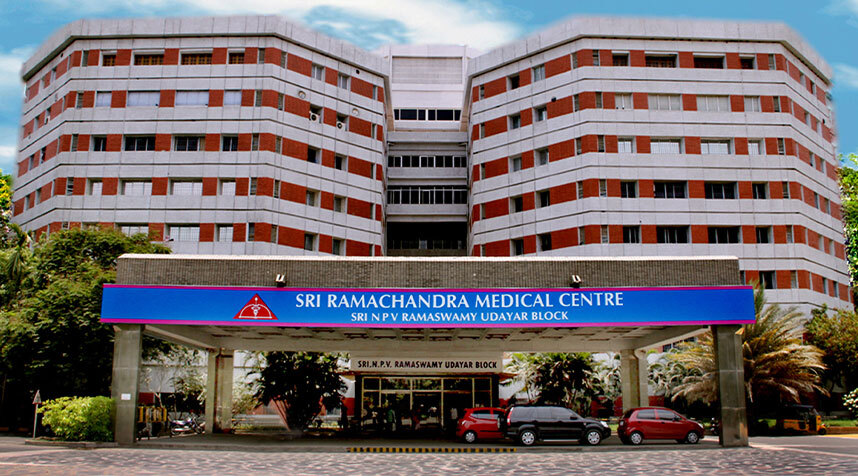
Sri Ramachandra Medical Centre has been accredited by JCL, NABL, ISO, and NABH. It has an 800-bed facility with 200 beds. It has a full-fledged blood bank unit with a 24-hour eye bank. It has special departments for cardiac sciences, ENT, gynecology, neurology, orthopedics, transplants, general surgery, etc.
>>Fortis Hospital, Shalimar Bagh
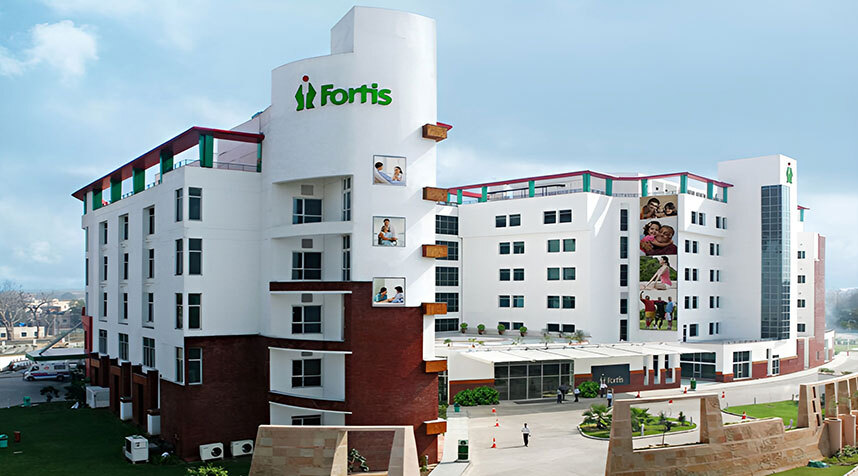
Fortis Hospital has been accredited with NABL, ISO, and NABH credentials. It has a 262-bed facility. It consists of a 3D Laparoscopic system, Capsule Endoscopy, Flat Panel Cath Lab, 100-Watt Holium Laser, etc. It has rehabilitation facilities wherein the patients are trained in exercises and therapies.
>>Wockhardt Hospital, Mumbai
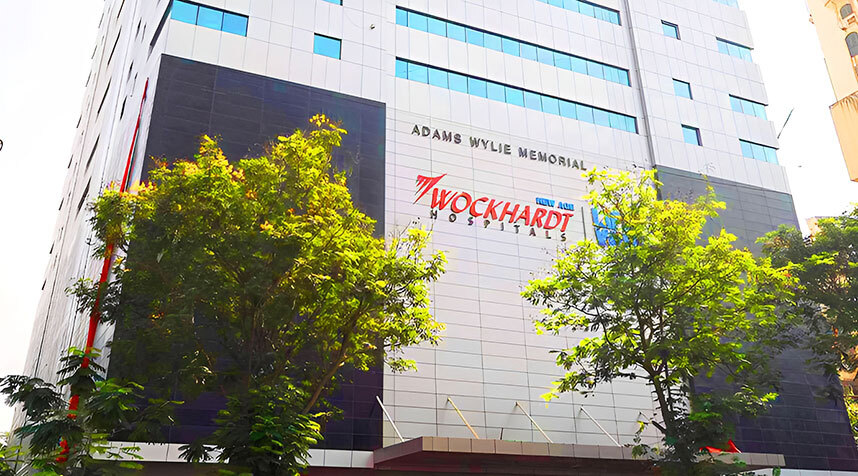
Wockhardt Hospital has been accredited with NABH credentials. It has a 350-bed facility. It has 8 modular operation theatres like joint replacement, cardiac, oncology, organ transplant, and MAS. It has the largest Intelligent ICCA system. They are 100 beds that are specifically kept for critical care.
>>Max Smart Super Speciality Hospital, Delhi
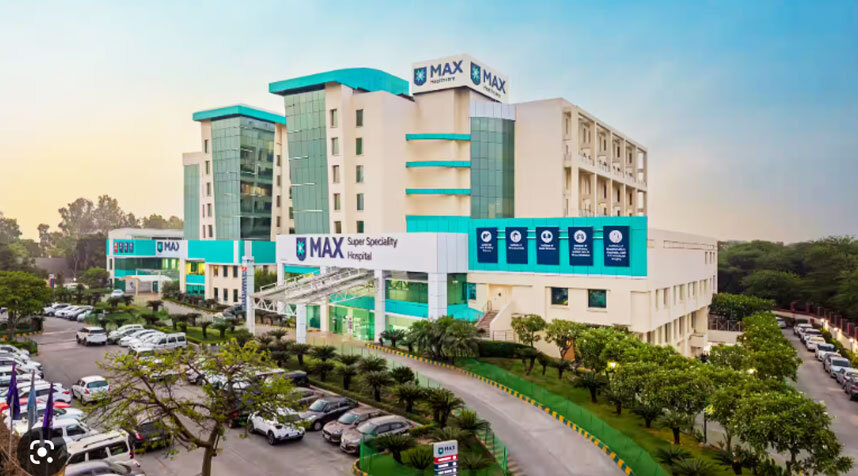
Max Smart Super Speciality Hospital has been accredited with NABH. It has a 250-bed facility and 12 modular operation theatres. It has technologies like 256 Slice CT Angio, 3.0 Tesla digital broadband MRI, GE Lightspeed 16-slice CT scanners, etc. It also provides interpreter facilities.

Are you struggling to find what you are looking for?
Get Expert's Callback
Best Doctors for Stomach Cancer Treatment in India
1. Dr. Gurdee Singh Sethi
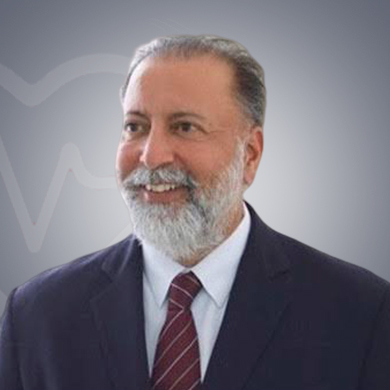
Qualification: MBBS | MD
- He is a member of ASH, ACP, ASCO, TMA, IACA, PMC, HCMA, TMC, and DMC
- He has excellent performance in bone marrow transplant and chemotherapy
- He has successfully treated diseases like multiple myeloma, acute lymphocytic leukemia, breast cancer, brain cancer, rectal cancer, thalassemia, etc.
Qualification: MBBS | MD
- He is a member of MCI and is certified by NUTAS and FCCS
- He has performed procedures like proton therapy, intensity-modulated radiotherapy (IMRT), brachytherapy, stereotactic radiotherapy (SRT), gamma knife radiosurgery, etc.
- He has also treated symptoms like fatigue, lumps, tumors, persistent cough, changes in bowel or bladder movements, etc.
Qualification: MBBS | DNB
- She is a member of AROI, IMA, and SASCRO
- She has successfully performed procedures like stereotactic radiotherapy (SRT) and intensity-modulated radiotherapy (IMRT)
- She has treated diseases like prostate cancer, eye cancer, lung cancer, brain cancer, rectal cancer, vascular malformations, etc.
Qualification: MBBS | MS
- He is a member of ISO, ISDE, and DMA
- He has been certified by SOTMH, HIPEC, and surgical oncology at TMH
- He has successfully treated lung cancer, colorectal cancer, cervical cancer, breast cancer, stomach cancer, etc
Qualification: MBBS | MD | DNB
- She is a member of ASCO, UICC, API, DMC, JIACM, IMA, ISO, ESMO, and ICON
- She was the director of Medical Oncology at Dharamshilla Hospital and a Senior Resident at RML Hospital
- She has successfully treated symptoms like persistent muscle pain, fatigue, unexplained bleeding, persistent cough, difficulty swallowing, hoarseness, etc.
Frequently Asked Questions
Before going to a hospital for stomach cancer treatment, one should consider factors like location, accreditation of the hospital, intensive care units, diagnostic services offered, post-operative care services, type of hospital (government or private), etc.
Before choosing the best oncologist for stomach cancer treatment, one should consider factors like asking for referrals from the doctor who provides primary care, confirming the doctor’s credentials, considering the experience of the doctor, evaluating the communication style of the oncologist, and the quality of the hospital.
India has one of the best infrastructures of hospitals, excellent teams of doctors, and affordable treatment options.
The risk of getting affected by stomach cancer depends upon the following:
- Age (people above the age of 55 are more likely to be affected by stomach cancer)
- Gender (men seem to be twice as affected by stomach cancer)
- Genetic disorders related to BRCA1 and 2 genes, CDH1, Lynch Syndrome, and FAP
- Smoking
- Diet and obesity
- Working in metal, coal, or rubber industries
- Infections due to H. pylori, Epstein-Barr, or pernicious anemia
Surgery is the most common type of treatment method for all kinds of stomach cancer stages. Chemotherapy and radiation therapy may be given separately or combined together before or after surgery. Targeted therapy and immunotherapy may also be used consisting of various medications and drugs.
The survival rate for stomach cancer treatment in India is 75% after 5 years of treatment
The recovery period for stomach cancer after treatment is 3 to 10 days in the hospital. A full recovery takes 3-6 months. Approximately 20-23 days are to be spent outside the hospital as an outpatient. After this period the patient should consult the doctor on whether they can travel or not and the risks involved in doing so.
References:
Related Reads:
Immunotherapy: Symptoms, Classification, Diagnosis & Recovery
Colorectal Cancer Treatment: Symptoms, Classification,
Diagnosis & Recovery
Abdominoperineal Resection: Symptoms, Classification, Diagnosis & Recovery
Brain Cancer Treatment: Symptoms, Classification, Diagnosis & Recovery
Ovarian Cancer Treatment: Symptoms, Classification, Diagnosis & Recovery









